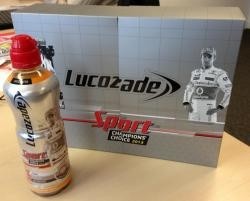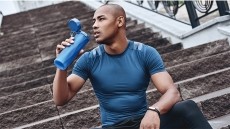Let’s get physical? Health claims guidance reveals sector fragility

The 9-page guidance was produced after a consultation period in which only seven stakeholders submitted comments. Other segments like gut health and immunity and cognitive health have drawn a much bigger response from industry and academia.
The document is intended to summarise the Parma-based agency’s position on the sector that seen many more claims rejected than accepted by EFSA’s health claims panel under the 2006 nutrition and health claims regulation (NHCR).
The guidance outlined EFSA thinking on:
- Physical performance
- Endurance capacity
- Muscle function
- Physiological effects and their relation to physical performance or endurance
Christiane Alexander, PhD, senior consultant at analyze&realize in Germany said the guidance could be, “of some help” but fell well short of true usefulness.
“There are not enough details for the food industry to be sure how to conduct clinical trials in a satisfactory way to convince the NDA panel (Panel on Dietetic Products, Nutrition and Allergies),” Alexander said.
See said the agency’s guidance was weak because it failed to engage with nutrition and sports scientists.
“This rather brief document clearly indicates that physical performance is an area of nutrition science that needs more expert input from academia and the requirement of interaction between academia and industry to develop more adequate and helpful instructions when it comes to health claim substantiation,” she said.
In the guidance the NDA said studies performed on target groups like athletes could be admissible but noted such a deviation from the ‘healthy subjects only’ mantra of previous years was, “the subject of ongoing discussions with the Commission and Member States with regard to their admissibility.”
Examples of potential admissible physical measures included:
- Physical performance during short-term, high intensity exercise vs longer-term, endurance performance
- Single exercise bout vs repeated bouts
- Weight bearing vs non-weight bearing activities
- Time spent to run a certain distance
- Distance cycled during a time-trial
- Throwing distance in javelin or shot put
- Jumping height, walking speed and number of chair-stands in a certain time
“Some of the outcomes proposed (e.g. changes in VO2max, muscle glycogen stores, and substrate oxidation) are not direct measures of endurance capacity but could be used in support of a mechanism by which the food/constituent could exert the claimed effect,” the NDA wrote.
The sports nutrition sector was attacked this month by Oxford University researchers who published a series of damning articles about the sector's efficaciousness in the British Medical Journal.
Drug giant GlaxoSmithKline, the manufacturer of Lucozade and owner of MaxiNutrition, hit back saying more than 80 pieces of research conducted over 40 years backed the effectiveness of its products to assist sports performance and enhance health.














